According to some 2023 stats, 68% of online experiences start on a search engine (and most likely Google, as they dominate 92% of the search engine market) and less than 1% of searchers go on to page two of Search Engine Results Pages (SERPs).
So if that doesn’t make you want your website ranking in the top positions of page one search results, then I don’t know what will. If you’re new to SEO or have dabbled, there’s lots of paid SEO tools and platforms out there, but you can’t beat the ones that Google offers for free.
Search engines want you to provide their searchers with a seamless, engaging and easy online experience, along with relevant and helpful content – the following Google SEO tools will help you get there.
1. Google Search Console
Google Search Console is a free Google tool that allows you to monitor and improve your website’s performance by providing valuable information about its indexing status, search traffic, and various technical SEO aspects that can affect a website’s visibility.
Google Search Console is extremely useful as it can help you identify and fix issues that may be hindering your website’s visibility in search results, such as crawl errors, duplicate content, and broken links.
You can also submit sitemaps, understand how your site is performing from an experience perspective, and receive alerts about critical issues, such as security breaches or manual penalties.
One of the things that I use Google Search Console for the most is analysing search performance – it allows you to see particular clicks and impressions, which can be broken down further into queries and pages.
Not only is this handy for reporting, but it also helps you understand which queries for a particular page are receiving a lot of impressions, but perhaps not a lot of clicks, giving you more of an idea of which keywords to use.

A few other useful features include:
Page indexing
Your website won’t show up on Google unless it’s indexed. Google Search Console can tell you how many of your pages are being indexed. For example, if 80% of your site is indexed then the other 20% is invisible to Google.
You can then look into reasons why a URL isn’t indexed, giving you more insight into your website’s indexability.
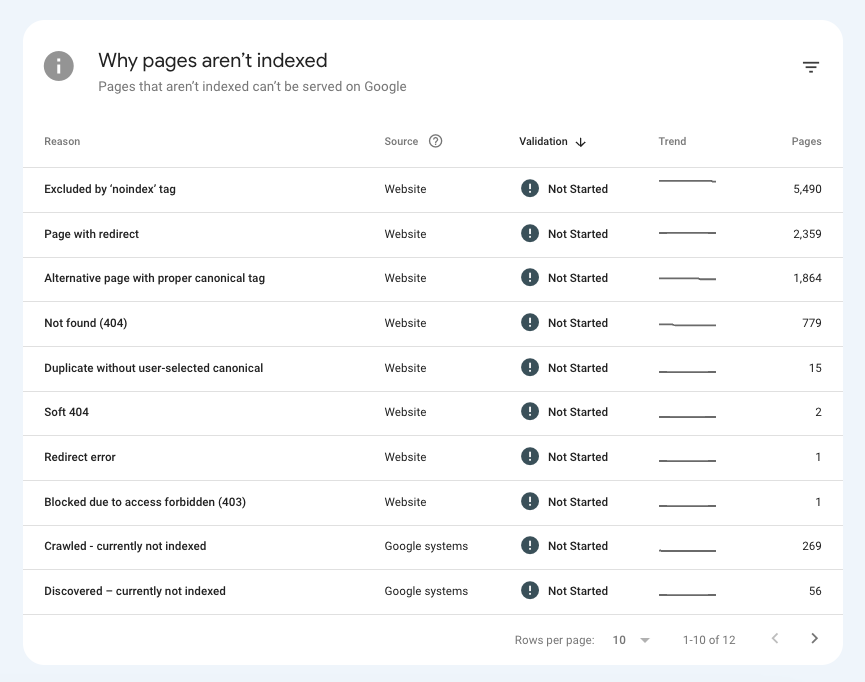
Crawl stats
This report can tell you the total number of crawl requests to your site in the past 90 days. Similar to indexing, making sure your pages can be crawled helps Google see that your site has relevant information for users.

Mobile usability
Google Search Console’s mobile usability report can provide you with insights into how your website performs on mobile devices. This report identifies issues that may affect the user experience on mobile devices, such as small text, unplayable content, or improperly sized elements.
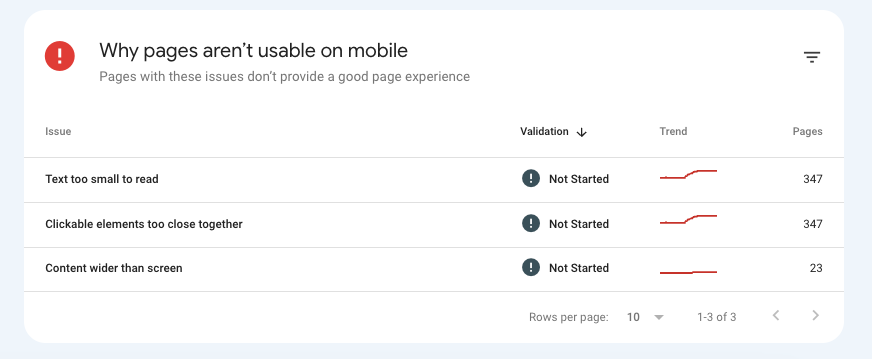
By addressing these issues, you can improve your website’s mobile user experience, which can positively impact your search engine rankings. Google has made it clear that mobile-friendliness is a critical ranking factor (more on this later!), and websites that aren’t mobile-friendly may see a drop in rankings.
2. Google Analytics
Google Analytics is another free Google SEO tool that tracks and reports website traffic, user behaviour and other SEO metrics that are important for understanding a website’s performance.
It provides valuable insights into how users interact with a website and helps website owners to make data-driven decisions to improve their website’s performance.
Google Analytics is particularly helpful, because it allows you to track important metrics related to SEO, such as:
Traffic sources
Google Analytics has an acquisition report that shows where website traffic is coming from, including search engines, social media, and other referral sources. By understanding where your traffic is coming from, you can focus on optimising your website for those channels.

User behaviour
Google Analytics also shows how users interact with a website, including which pages they visit, how long they stay on the site, and where they exit.
By analysing this data, you can identify areas of the website that need improvement and make changes accordingly to improve user engagement and conversion rates. For example, if you see that your website receives a lot of organic traffic, you can find out how much and which pages they’re going to.
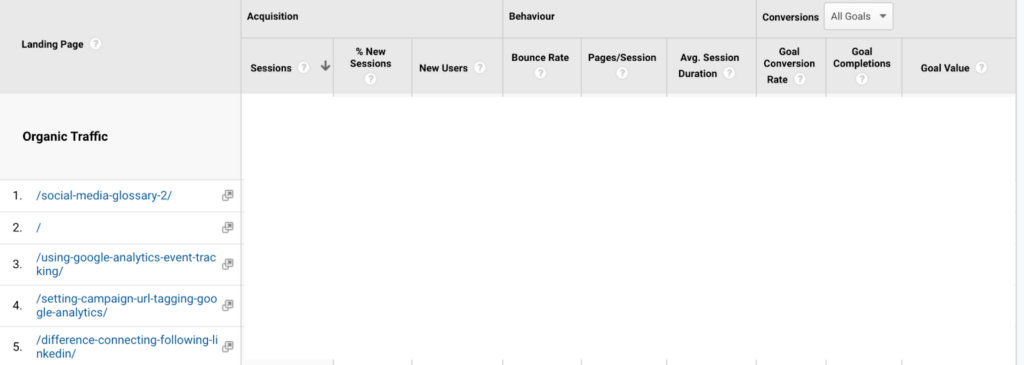
Real-time
With real-time reports, you can see how many visitors are currently on your site, which pages they’re interacting with, and website traffic metrics such as location and channel.
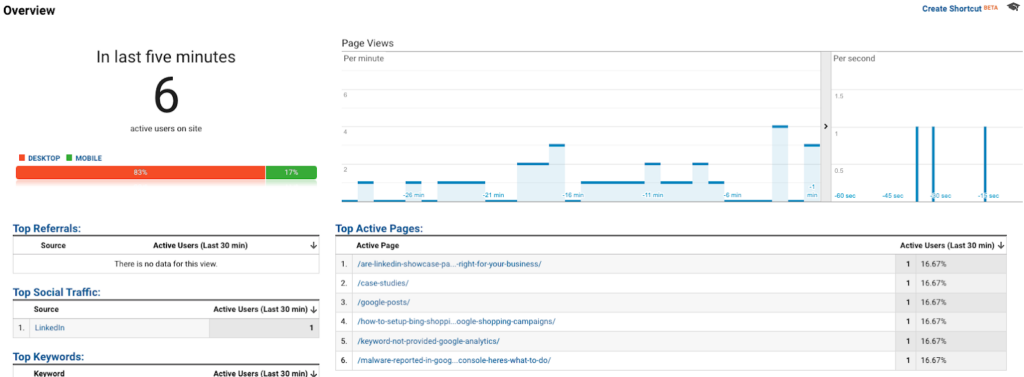
Real-time reports are fantastic for monitoring campaigns that you’ve set up like email marketing, social media posts, or content you’ve produced, as they provide insight into how users are reacting to your digital marketing strategy in real-time.
Audience reports
The audience section in Google Analytics provides insights into the characteristics and behaviour of your site visitors. It includes a range of data related to demographics, interests, location, devices, and user behaviour, helping you to understand and segment your audience.
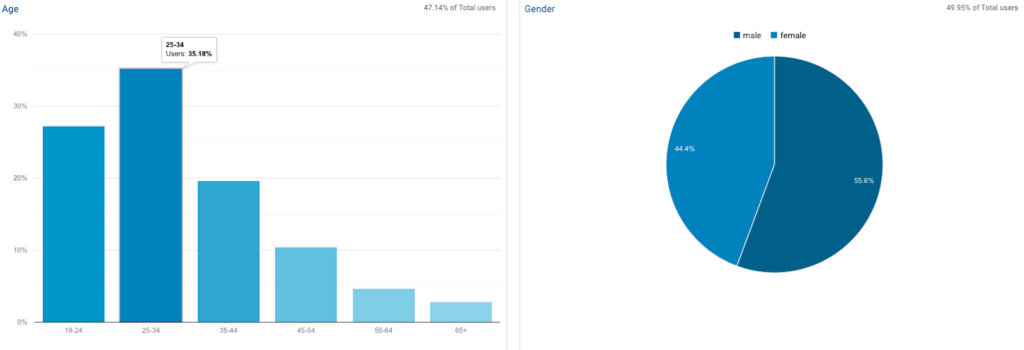
Conversions
You can also set up, track, and analyse user conversions, which is when a user completes a specific goal, such as making a purchase, filling out a form, or signing up for a newsletter. The goals section also provides data on the number of conversions, the conversion rate, and the value of each conversion.

For websites that sell products or services, the ecommerce section provides data on revenue, transactions, and products sold, which can be used to analyse sales performance and optimise product offerings.
Finally, multi-channel funnels then provide data on the various channels that users interact with before completing a conversion, which can be used to analyse the effectiveness of different marketing channels and optimise marketing efforts accordingly.
Please note, this will all change when Universal Analytics sunsets on 1st July 2023 and GA4 will become your main analytics port of call. If you’re yet to migrate to GA4, then get in touch with us.
3. Keyword Planner
A lot of SEOs use Google itself to do preliminary keyword research as it shows real-time and accurate insight into what people are searching for. For example, if I’m a dog food supplier, then I can see what other terms people are searching for:
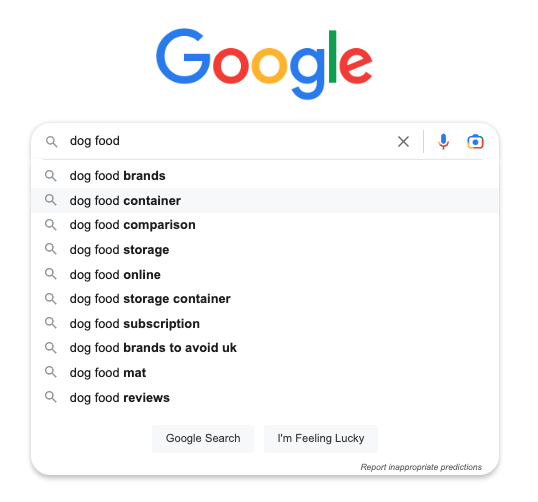
People are also searching for dog food containers and mats, so I might want to consider selling it along with my dog food or perhaps sell it as a subscription. I also might want to think about selling wet, dry and raw dog food:
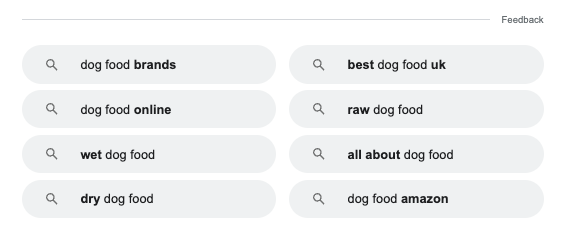
It also looks like people are after guides on dog food of some sort based on the keyword ‘all about dog food’ – I could also include some questions that people are wanting to be answered like:
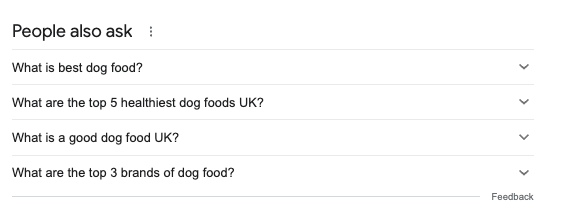
All of these native methods are great to get an idea of what people are searching for. However, you can use Google’s Keyword Planner, because despite it being predominantly a tool for paid advertising campaigns, it provides insight into the popularity and competitiveness of specific keywords.
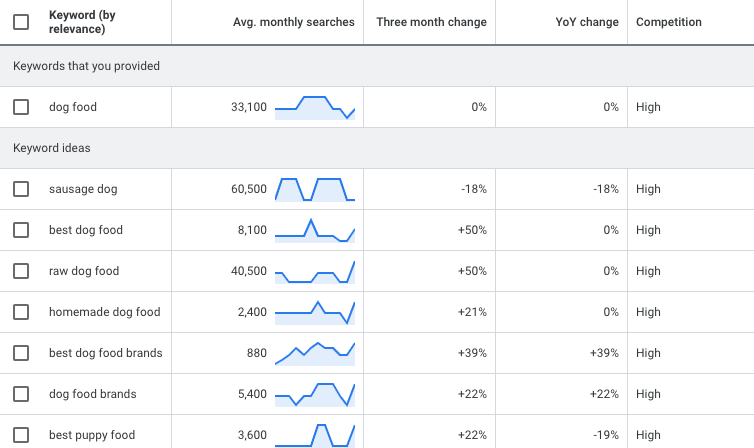
By researching and selecting relevant keywords with high search volume and low competition, you can optimise your website content to rank higher in SERPs, driving more organic traffic to your webpages.
However, metrics, such as monthly searches and competitiveness, are mainly based around paid activity, which may differ from organic activity, so it’s important to take them with a pinch of salt.
If you want to look into SEO-specific keyword research tools, you can look into ones like Semrush and Ahrefs – which are both paid tools – but are super popular with SEOs as they offer free trials or a free package for one website, but with limited platform access.
4. Google Business Profile
Google Business Profile, formerly known as Google My Business, is another Google SEO tool that allows you to manage your online presence across Google, including Google Maps and Google Search. It also allows you to create and update your business listing with accurate and up-to-date information, such as business hours, phone number, address, website, and photos.
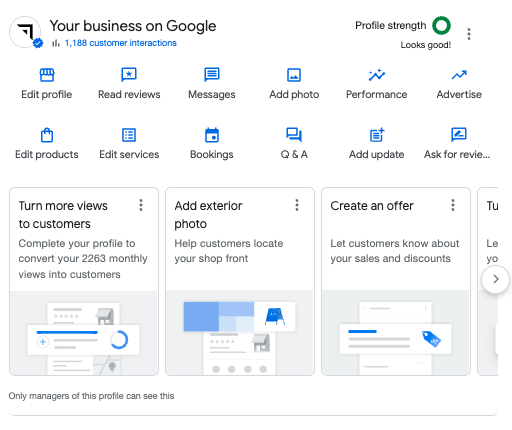
Google Business Profile is a powerful tool, especially for local SEO, because it helps businesses to improve their online visibility and appear higher in local search results. By providing accurate and comprehensive information about your business, Google is able to match the business to relevant searches by potential customers.
Additionally, Google Business Profile offers several features that can benefit SEO efforts, including:
- Customer reviews: positive reviews from satisfied customers can help improve your online reputation and increase your visibility in search results. If you get less than positive reviews, it’s important to respond to them as not only does this give your profile a human touch, but also unsatisfied customers will appreciate your response.
- Google Posts: you can use Google Posts to share updates, offers, and other information with potential customers directly on your listing.
- Insights: Google Business Profile provides data on how your customers are finding and interacting with your listing, which can help you optimise your listing and improve your SEO strategy.
For more ideas and advice on how to improve your local visibility, please read Emily’s latest edition of her local SEO checklist.
5. PageSpeed Insights
Google’s PageSpeed Insights should not be treated as the be-all and end-all to understanding your site’s page speed. However, it’s definitely useful for a beginner and still a great tool for understanding and improving the performance and speed of your website for user experience on both mobile and desktop.
Page speed is an important factor in SEO because it’s one of the many factors that Google takes into account when ranking websites in search results. A faster website is more likely to rank higher in search results than a slower one, all other factors being equal.
PageSpeed Insights provides a score on a scale of 0 to 100, indicating how well the website performs in terms of speed and user experience. This score can be used as a benchmark to track improvements over time and compare the website’s performance against competitors.
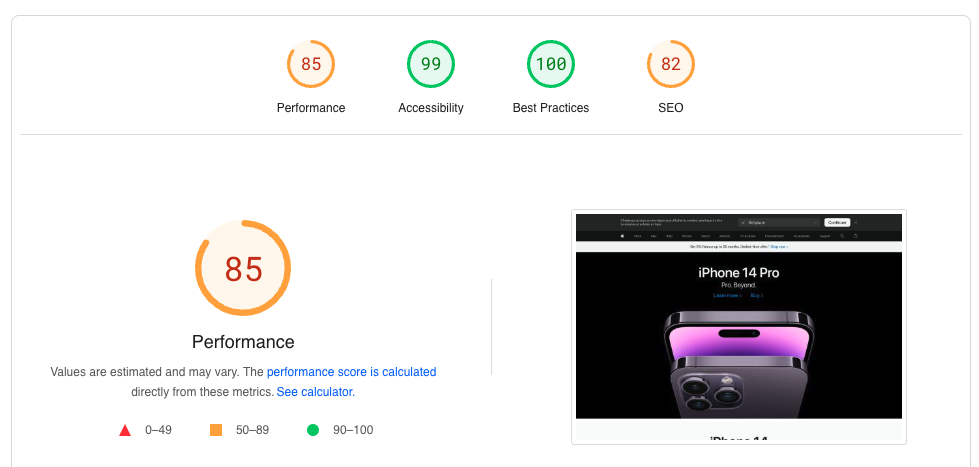
The tool also provides a detailed analysis of a website’s speed and performance, and suggests ways to improve it. The tool evaluates a website’s load time, time to first byte, and other key performance metrics that can impact the user experience and SEO.
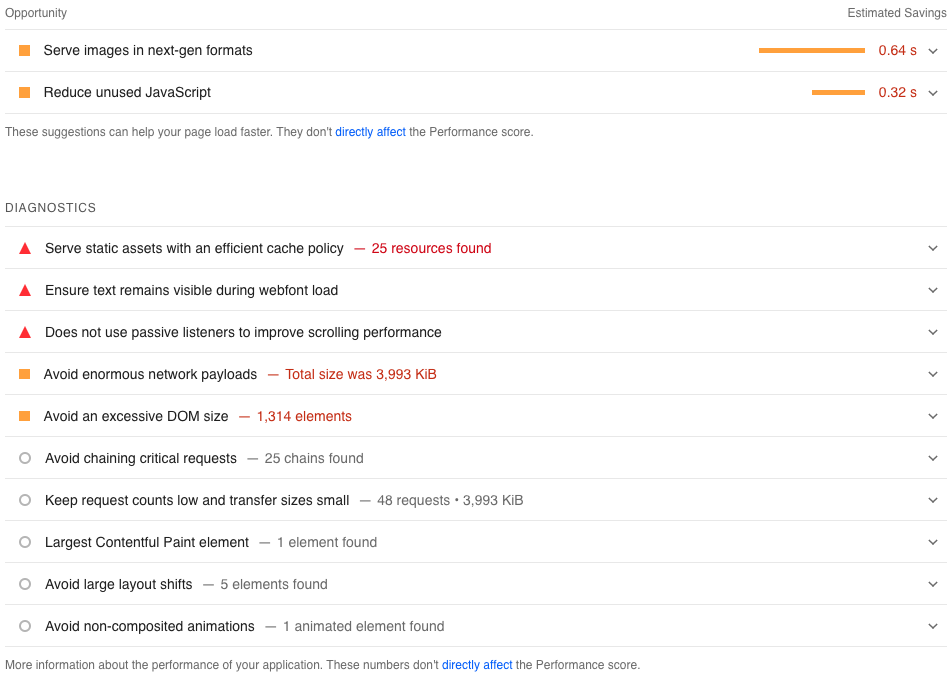
A more recent feature of the tool is that it tells you whether your website passes or fails Core Web Vitals, which are a set of specific website metrics introduced by Google in 2020 that measure user experience on a website.
These metrics are designed to evaluate three key aspects of website performance: loading speed, interactivity, and visual stability:
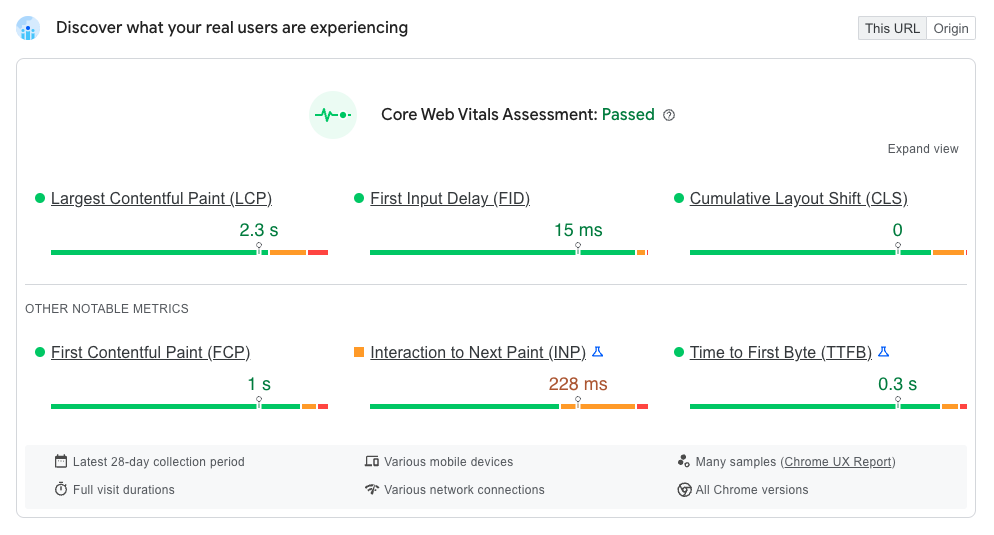
Google considers these metrics to be important factors in determining the overall user experience on a website. Websites that meet the recommended thresholds for these metrics are more likely to provide a positive user experience, which can result in higher search rankings and more traffic to your website.
6. Mobile-Friendly Test
According to Statistica, nearly 60% of global website traffic comes from mobile, which means that your website’s mobile version should take priority over desktop and Google acknowledges this with their mobile-first indexing.
Google’s mobile-first indexing started coming into effect way back in November 2016 and it essentially means that Google predominantly uses the mobile version of website and content for indexing and ranking.
To ensure that your users have the best experience possible on mobile – and to get the best chance of ranking high on search engines – you can use Google’s Mobile-Friendly Test, a tool that analyses a URL to determine whether it’s optimised for mobile devices or not.
The tool checks the page’s layout, font sizes, and the use of mobile-compatible technologies like responsive design and mobile-friendly navigation. The results of the test provide feedback on how mobile-friendly the page is, along with recommendations for improving its mobile usability.
This is what a pass looks like:

But if your webpage doesn’t pass the test, you’ll receive something like this:
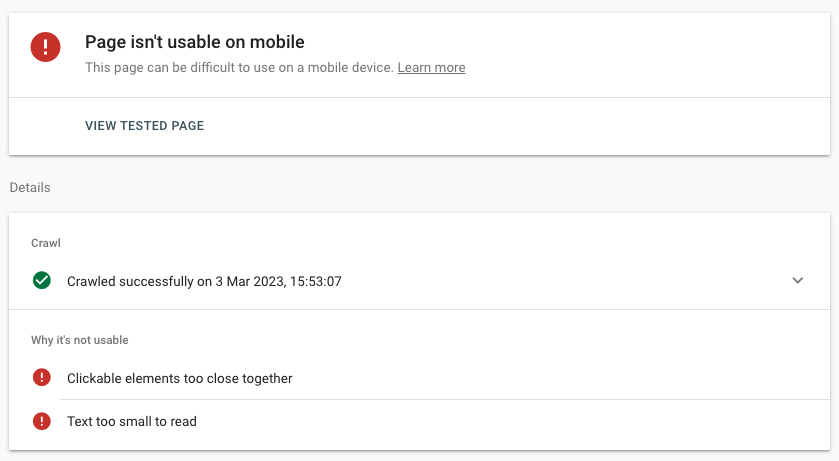
For this example, you can see that Google has rendered the page as not usable on mobile for reasons such as clickable elements being too close together and the text being too small to read.
Remember, Google Search Console has a mobile usability report, which groups together all URLs that are and aren’t mobile-friendly.
7. Rich Results Test
Google’s Rich Results Test is a tool that enables you to test and validate structured data markup used on a webpage. Structured data is a way to provide additional context about the content on a page to search engines, which can help them to understand the content better and display it in a more informative and visually appealing way in the search results.
A popular example of rich results is when you search for something that returns recipes:


Here, you can see that Google has been able to understand more about the page so that it can display recipe steps, images, ratings and ingredients directly on the SERPs.
The Rich Results Test allows you to see how your structured data markup is interpreted by Google and identify any errors or warnings that may prevent rich results from appearing in the search results.
This can be beneficial for SEO because it enables you to improve your website’s visibility in search results by ensuring that your structured data is correct and validated by Google.
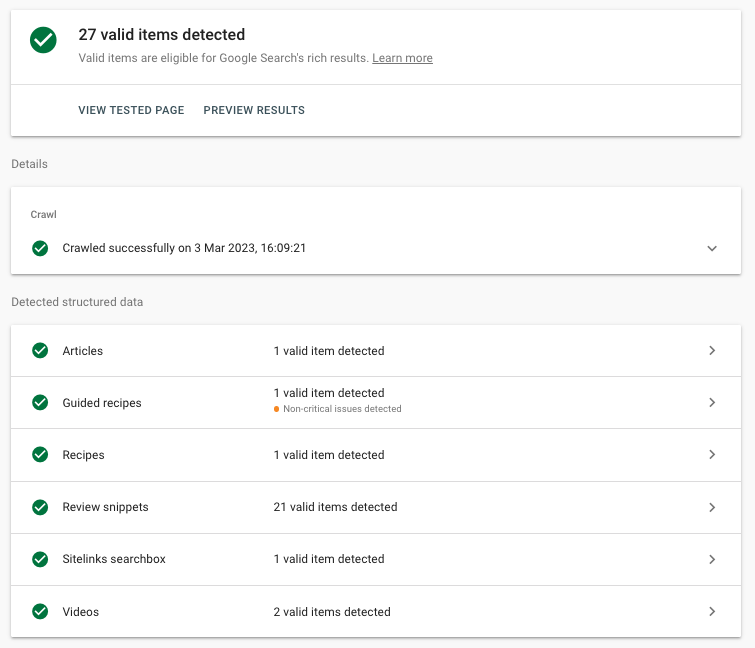
Rich results can help to attract more clicks and drive more traffic to your website, as they stand out from the regular search results and provide more detailed information to searchers.
In addition, Google has stated that using structured data does not directly impact search rankings, but it can indirectly affect rankings by improving the overall quality and relevance of your website’s content. By using this test to ensure that their structured data is correct and optimised, you can improve your website’s user experience and indirectly improve your search engine rankings.
8. Google Trends
Last, but certainly not least, Google Trends! This Google SEO tool allows users to explore search query data for various topics and keywords. With Google Trends, you can see how search volume for a particular keyword or topic has changed over time, as well as the geographic locations where those searches are most popular.
Google Trends can be a valuable tool for SEO because it provides insight into what people are searching for and when. For example, looking at food delivery terms, you can see that search Deliveroo increased during COVID lockdowns in the UK:
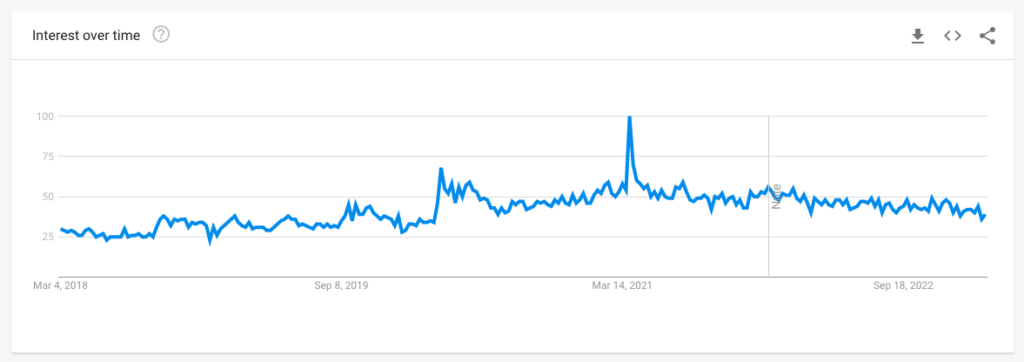
In addition to looking at past trends, you can also identify emerging topics and keywords that can be used to create content that meets the needs of your target audience. This can help to improve the relevance and effectiveness of your content, which can lead to better search engine rankings and increased traffic.
For example, you can see that ChatGPT is still a hot topic that people are interested in so if you work in the digital marketing space, it might be an idea to create some content about AI:
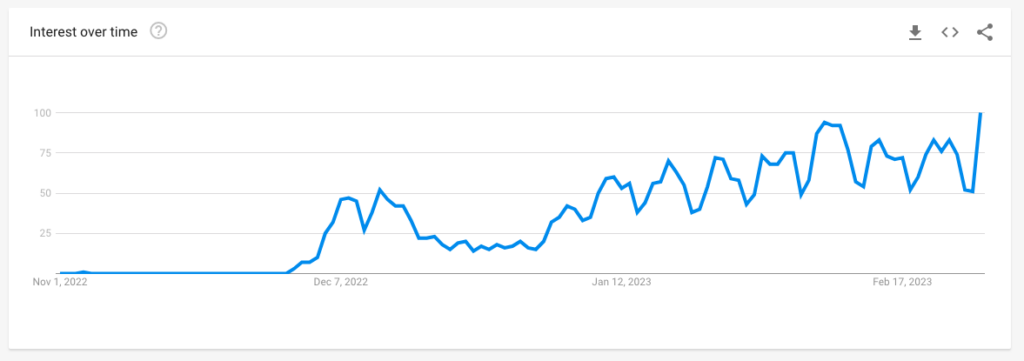
Finally, Google Trends can be used to identify seasonal trends and fluctuations in search volume for certain keywords, which can help businesses plan their marketing campaigns and content strategies more effectively.
For example, if you own a home improvement company, you may want to focus on radiators coming up to winter months as you can see below that’s when seasonality is at its highest for those types of products:
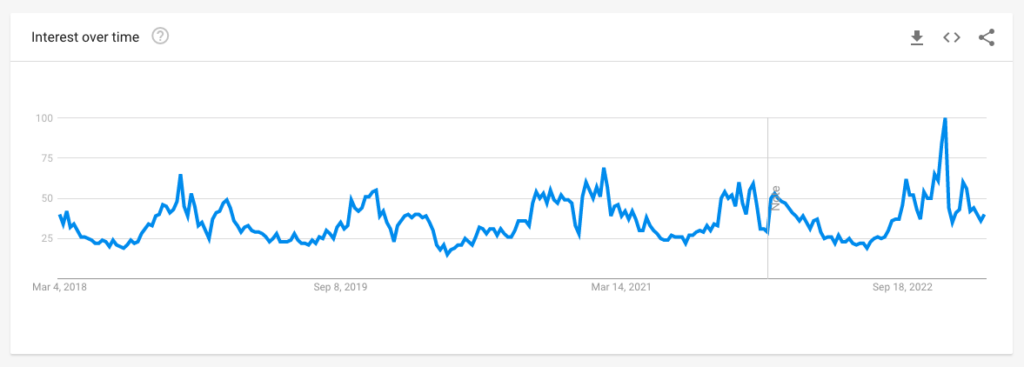
By using Google Trends to stay ahead of emerging trends and understand the changing search behaviour of your target audience, you can gain a competitive advantage and reach your goals more efficiently.
Final thoughts
Google offers a variety of free SEO tools to help website owners and SEO professionals improve their website’s search engine rankings and performance. We’ve covered the most popular and most useful:
- Google Search Console
- Google Analytics
- Keyword Planner
- Google Business Profile
- PageSpeed Insights
- Mobile-Friendly Test
- Rich Results Test
- Google Trends
Overall, these Google SEO tools provide valuable insights and data to help you optimise your websites for search engines and improve their online visibility.
They cover all areas of SEO like technical, user experience, content, relevance, analytics, mobile and local SEO, so it would be a good idea for you to explore them all. By using these tools, you can identify areas for improvement, make data-driven decisions, and ultimately achieve your SEO goals.
I hope you found this guide on Google SEO tools useful, but if you’ve got any further questions, please get in touch with our SEO team.





